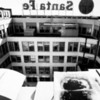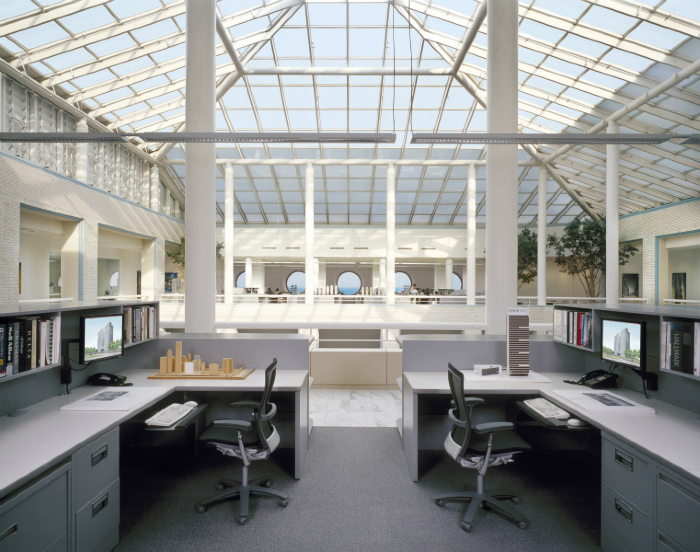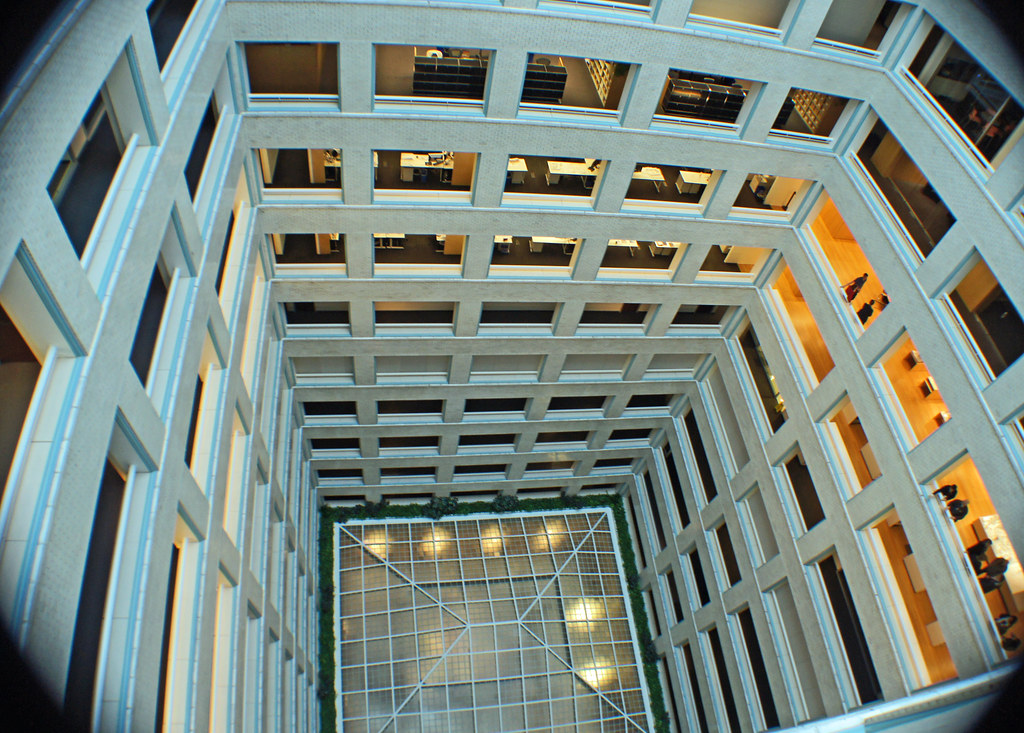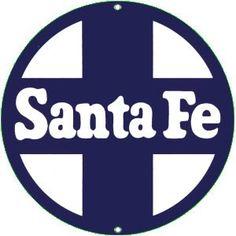Here is the story and pictures. I was there on Sunday, and the sign is prominent and looks great.
Replies sorted oldest to newest
It does indeed look great. Here's a shot I took when we were there a couple of weeks ago for Thomas Weekend.

Thank you for the updates. Glad to see the sign was saved and is being proudly displayed at its new home. Too bad that it was removed at all, wasn't the sign part of the historical heritage of the Railway Express Building? Would be terrible if Motorola received financial incentive to move there and then "disfigured" a historical building besides to do so.
BOBBYD, I seem to recall that the new signage was a condition precedent to Motorola signing a significant long term lease at the Railway Exchange Building. At least the Santa Fe sign was preserved and is now displayed at the museum for all to see. It fared better than the advertising sign on top of the old C&NW Terminal or the B&O sign at the old Grand Central Terminal, or even the iconic Pabst Blue Ribbon sign that overlooked the IC/ South Shore yard at Grant Park, and stood where the Prudential Building now stands. Much of Chicago's rail and general history is gone.
I do agree that the Railway Exchange Building was more attractive like this

than like this (not my photos, BTW).
I agree with BobbyD - it's too bad the sign couldn't have stayed on the building (or any building) in Chicago. It's another piece of the city's heritage thrown away. At least it was preserved and not destroyed, though.
That said, I can't say it looks very attractive stuck on some steel posts pounded into the ground like it is. Just my opinion, but it would look a whole lot better if it were attached to the top of some building at the museum.
Does anyone know where and when the "cross" went away?

Beautiful lobby...

For sure it was down by 2011?
Another view point. these are from the 80's it says.
Attachments
breezinup posted:
That said, I can't say it looks very attractive stuck on some steel posts pounded into the ground like it is. Just my opinion, but it would look a whole lot better if it were attached to the top of some building at the museum.
Most of the structures at IRM are pole barns. I doubt the roofs would support the sign without some expensive re-engineering that would suck up funds better used elsewhere.
Rusty
Rusty Traque posted:breezinup posted:
That said, I can't say it looks very attractive stuck on some steel posts pounded into the ground like it is. Just my opinion, but it would look a whole lot better if it were attached to the top of some building at the museum.
Most of the structures at IRM are pole barns. I doubt the roofs would support the sign without some expensive re-engineering that would suck up funds better used elsewhere.
Rusty
It would have been best if it could have continued it's life where it began. Short of that, it's now well loved at it's new home. I don't see any esthetic value in having it perched on top of a foreign building whatsoever. I agree it looks a little stark and cold, but proper landscaping will go a long way to soften the apparent harshness. Besides, future maintenance will be lest costly as currently displayed rather than up over some bland featureless building.
For those interested in detailed photos of the sign's former residence, here's a link to those and other similarly notable examples of Railway Exchange Buildings;
breezinup posted:That said, I can't say it looks very attractive stuck on some steel posts pounded into the ground like it is. Just my opinion, but it would look a whole lot better if it were attached to the top of some building at the museum.
Unfortunately I don't think there is a suitable building at the IRM to have attached it to. With the exception of the many barns, I think all of the remaining buildings are one-story and would have been dwarfed by the sign.
I believe another concern out there would be windy storms. The museum is surrounded by flat agricultural land, and a roof-mounted sign would be very exposed to damage. Even in its original roof-mounted location on Michigan Avenue, it was protected by much taller buildings to the west. In this photo from Wikipedia, the Railway Exchange Building is the white building "below" Three First National Plaza, center-left.

jay jay posted:Even in its original roof-mounted location on Michigan Avenue, it was protected by much taller buildings to the west.
In this photo from Wikipedia, the Railway Exchange Building is the white building "below" Three First National Plaza, center-left.
That's a fine argument accept for the fact that, being built in 1904, the Railway Exchange Building predates virtually all those taller buildings.
Mill City posted:jay jay posted:Even in its original roof-mounted location on Michigan Avenue, it was protected by much taller buildings to the west.
In this photo from Wikipedia, the Railway Exchange Building is the white building "below" Three First National Plaza, center-left.
That's a fine argument accept for the fact that, being built in 1904, the Railway Exchange Building predates virtually all those taller buildings.
I suspect the Railway Exchange Building's roof is considerably more stout than IRM's pole barns.
Now, if someone were willing to donate the funds to replace one of the pole barns with a steel and stone structure that would support the sign on the roof, I'm sure IRM would be more than glad to oblige.
Rusty
I don't recall when the sign was put on the building, but it was much later than 1904. Here is a picture that dates to 1905, so the sign was not original to the building, even though Santa Fe owned it. I don't recall the sign being there before the early 1960's, and I should remember, since I date to the 1940's. ![]() Point taken about big buildings to the west, however, at least for much of the life of the building.
Point taken about big buildings to the west, however, at least for much of the life of the building.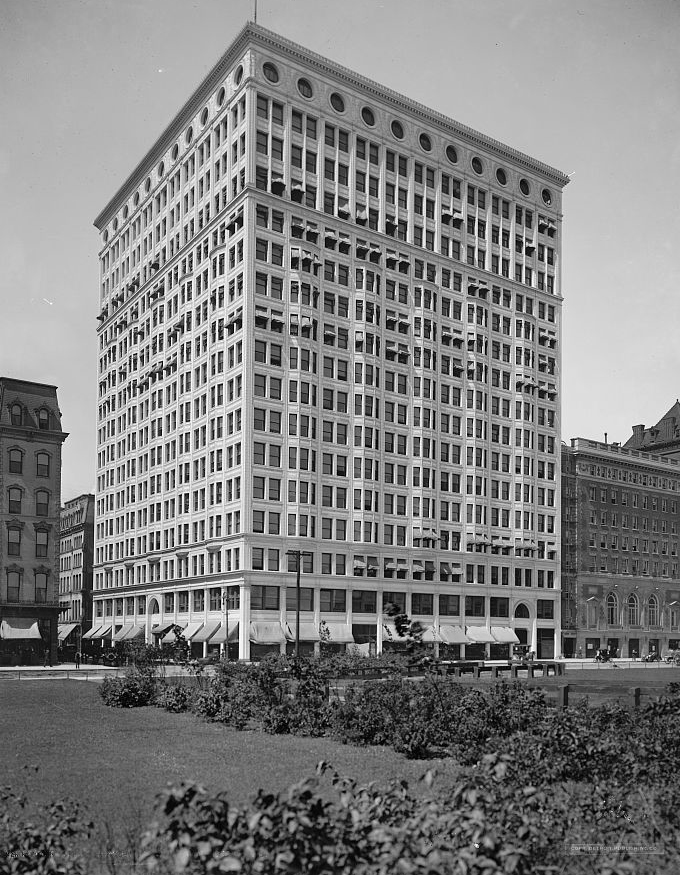
Rusty Traque posted:Now, if someone were willing to donate the funds to replace one of the pole barns with a steel and stone structure that would support the sign on the roof, I'm sure IRM would be more than glad to oblige.
Rusty
LOL ![]() Rusty, I'm sure IRM would put such a donation toward more pole barns, for which there is a continuing need.
Rusty, I'm sure IRM would put such a donation toward more pole barns, for which there is a continuing need. ![]()
That's a great photo poster, Dan.
By the way, I don't know where the Sante Fe logo roundel (cross in a circle) went. I don't know if its at the museum. It was removed from the Railway Exchange Building some time before the removal of the letters. I'll have to snoop around the next time I'm at IRM.
Attachments
Back when I was still a kid traffic guy, I atrended several meetings with Santa Fe in that building. I think the last time I would have been in there was the late '80's early '90's before they moved out to Schaumburg.
I'm not 100% on this but; I seem to recollect they had some fairly intricate etched glass in the doors on the floors I used to visit. All in all; it was a classic building.
Curt
Very sad indeed that the sign was taken down. I saw it as a testament to the great railway heritage of Chicago. But at least the great guys at IRM score again by preserving a fine piece
By the way, if any of you are ever in Chicago be sure to walk into the lobby of this beautiful building and look around.






